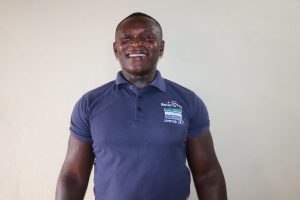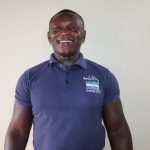A hunter founded Bross village, given its name by the people who settled there. Bross means ashes in the Temne language, referencing the hunter's fire to smoke their meat. After some time, the settlement expanded into two villages bearing the same name. People eventually left the original Bross village and settled in what is now called Bross 2 Village and later expanded into Bross 3.
The 109 people in Bross 1 make a living through farming, petty trading, and fishing. The other main livelihood is charcoal production. The community has cut down many large trees that are over a hundred years old to turn them into charcoal. Though productive for sales, this is also quickly contributing to the deforestation of the land in this area.
The main water source here is an open swamp. This community has been drinking this water for more than ten years. The quality of the water is very poor because it is open to contaminants. When someone comes to fetch water, they may see someone bathing in the swamp and another person washing clothes. As a result, cases of waterborne diseases are frequent here.
Sallieu Bangura is the oldest member of the community. We spoke with him when we visited the village. He has accepted the fact of never having clean water again in the community due to their broken-down well. The well has been non-functional for so long that he has forgotten how many years it has been, he said.
But that does not have to be Mr. Bangura's reality. A safe, reliable water source is possible for him and all of Bross 1.
The Proposed Solution, Determined Together...
At The Water Project, everyone has a part in conversations and solutions. We operate in transparency, believing it benefits everyone. We expect reliability from one another as well as our water solutions. Everyone involved makes this possible through hard work and dedication.
In a joint discovery process, community members determine their most advantageous water solution alongside our technical experts. Read more specifics about this solution on the What We're Building tab of this project page. Then, community members lend their support by collecting needed construction materials (sometimes for months ahead of time!), providing labor alongside our artisans, sheltering and feeding the builders, and supplying additional resources.
Water Access for Everyone
This water project is one piece in a large puzzle. In Kenya, Sierra Leone, and Uganda, we’re working toward complete coverage of reliable, maintained water sources that guarantee public access now and in the future within a 30-minute round trip for each community, household, school, and health center. One day, we hope to report that this has been achieved!
Training on Health, Hygiene & More
With the community’s input, we've identified topics where training will increase positive health outcomes at personal, household, and community levels. We’ll coordinate with them to find the best training date. Some examples of what we train communities on are:
- Improved hygiene, health, and sanitation habits
- Safe water handling, storage & treatment
- Disease prevention and proper handwashing
- Income-generation
- Community leadership, governance, & election of a water committee
- Operation and maintenance of the water point

 Borehole Well and Hand Pump
Borehole Well and Hand Pump
 Rehabilitation Project
Rehabilitation Project














